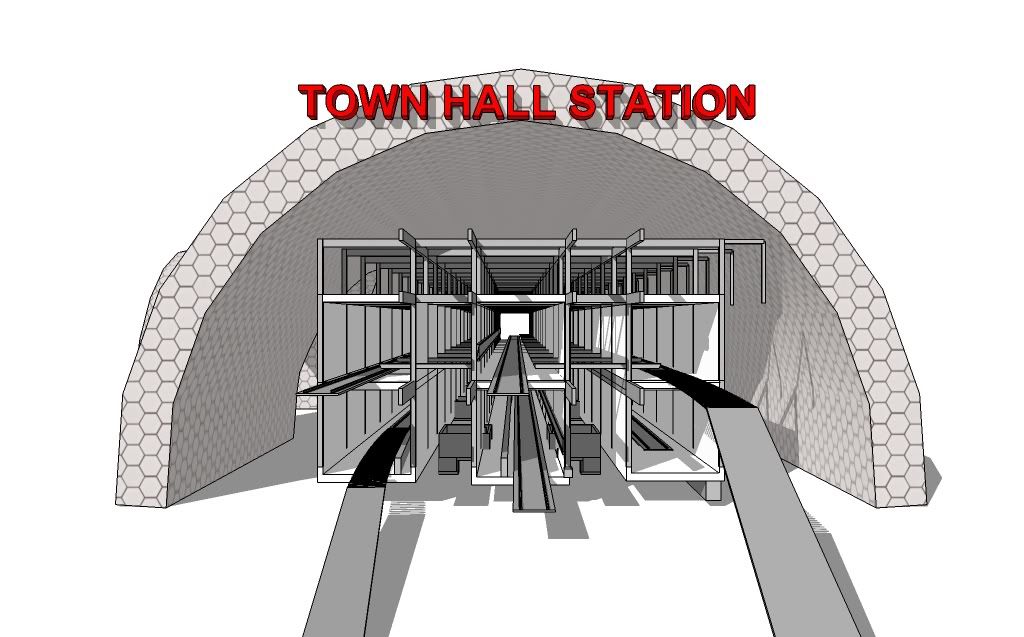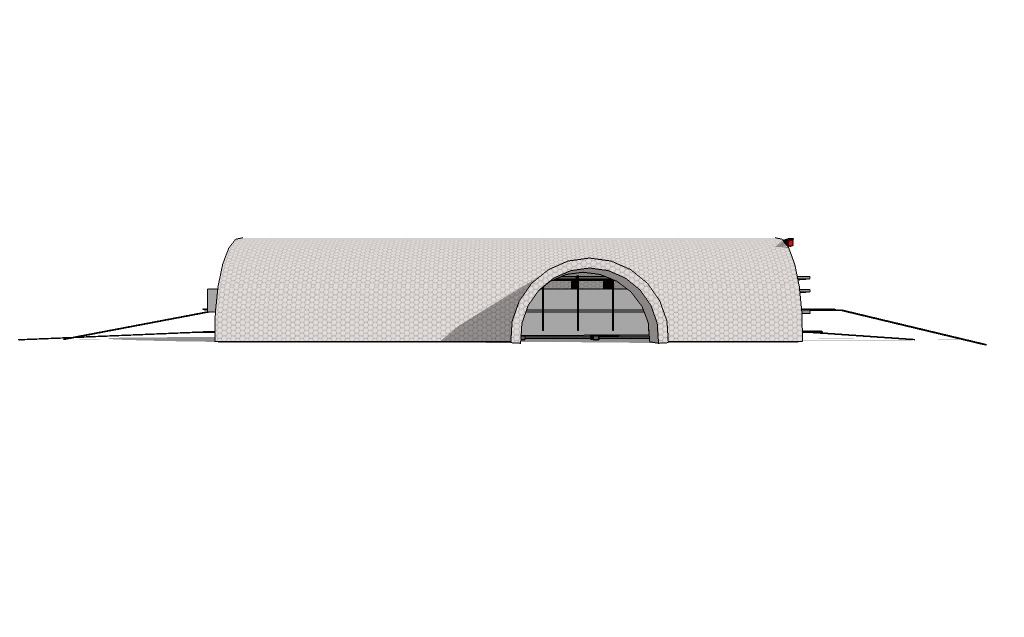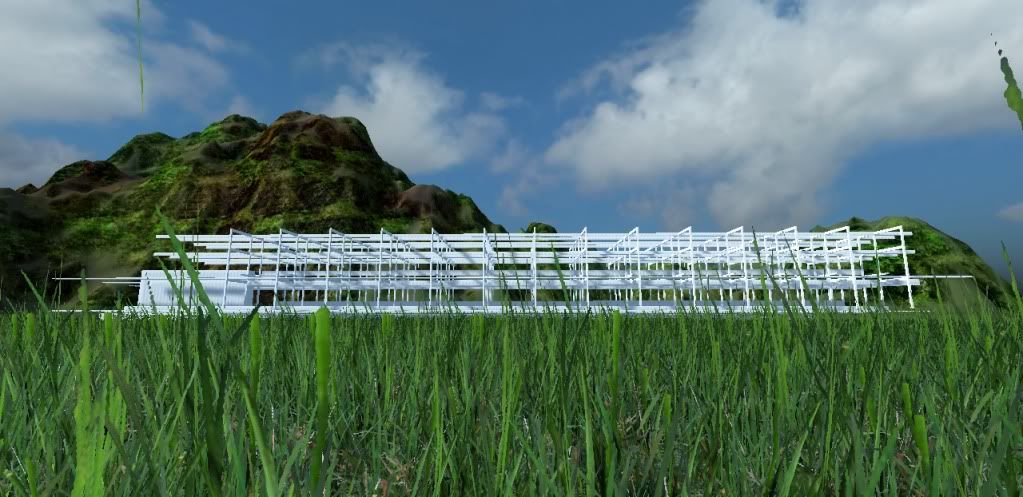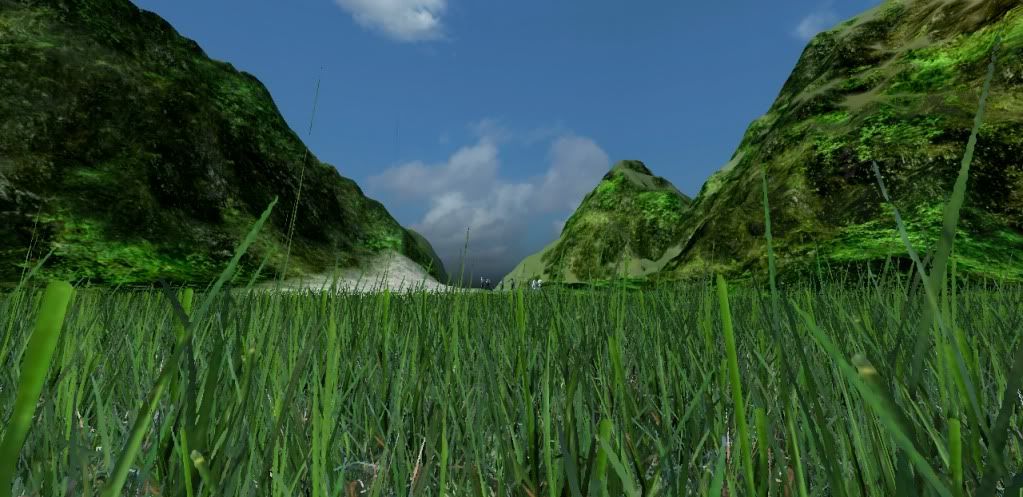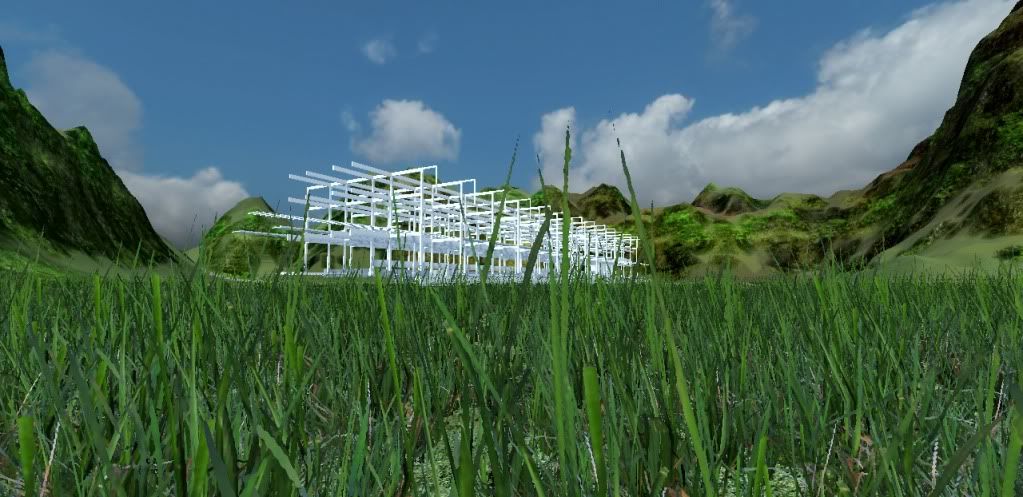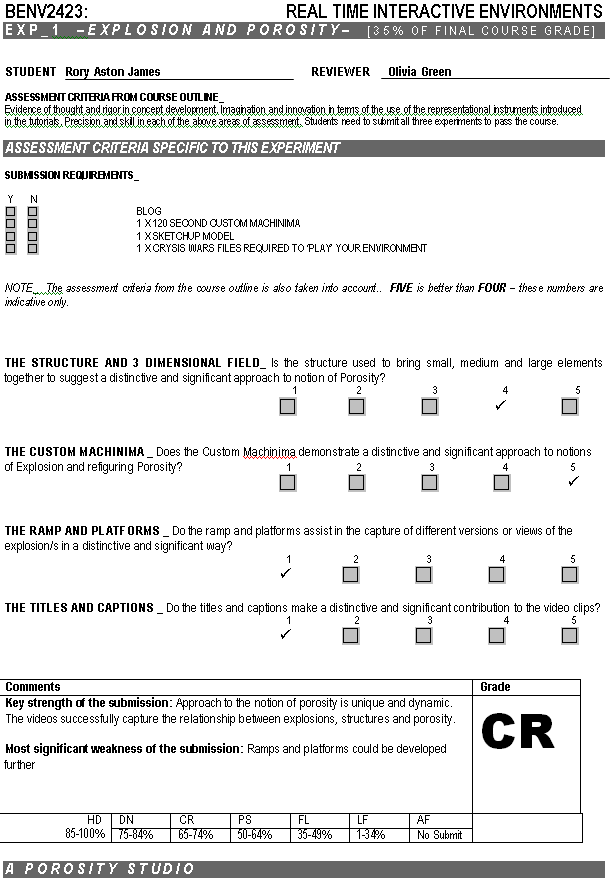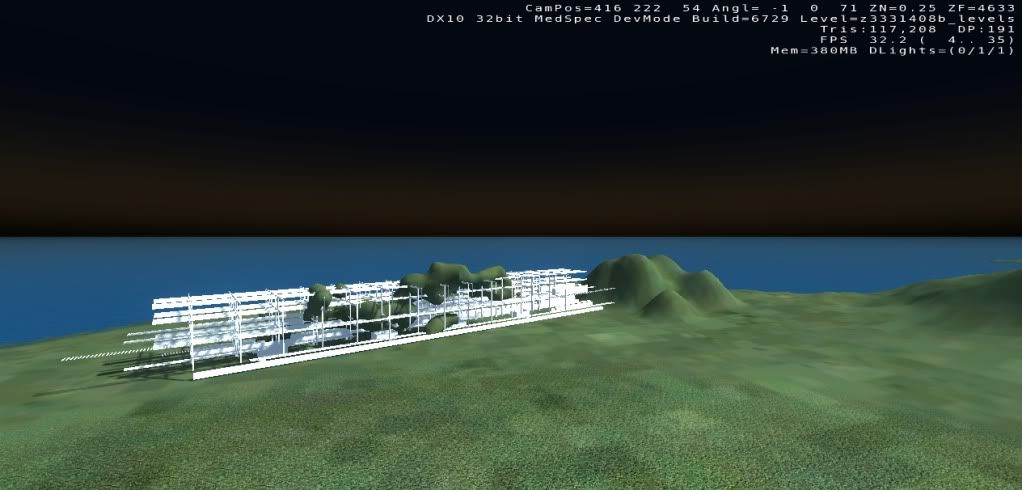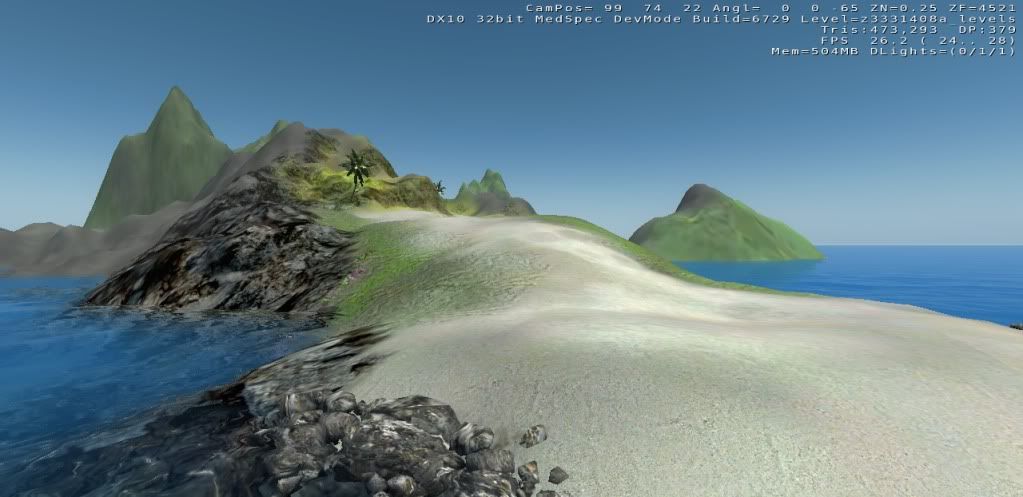Thursday, October 28, 2010
Tutorial Subject
Proximity triggers are the vital element of the game that brings about changes in events. It is of this reason that I recognised proximity triggers to be an important subject to focus on, and moreover and ideal tutorial subject. In developing a sound understanding of proximity triggers, one is open to an endless void of opportunities to create something unique within the crysis game. The tutorial focuses particularly on proximity triggers interaction with light entities and the time node. It will explore how to use proximity triggers to first switch a light on and off and then also will document how to change the time of day. While these concepts are fairly basic, they provide viewers a fundamental idea of how proximity triggers work and then they can adapt their knowledge gained from my tutorial, to solve their own situations. Additionally, an understanding of the time entity and light nodes will enable the user to control and manipulate their environment, within the game, in terms of controlling the lighting and the time.
The essential idea of this tutorial subject is to trigger a light when the time of day changes. For example a light will be switched on when its dark and switched off when its light. This concept provides a direct link to reality and as I found within my porosity lens of experiment 2, is useful for documenting changes within the crysis environment.
Draft Tutorial
To start with I didn't want to talk during my video. I wasn't confident that it would work, or that what I said would be clear enough to follow - I also tend to ramble on when I talk! However, after completing this draft, I now see that some form of communication with the viewer is needed! Also, the begining of this tutorial is helpful but irrelevant to proximity triggers, therefore I intend to leave this part out and include another way of using proximity triggers, for example using a trigger to turn a light on and off.
SketchUp Model & Files
Sketch Instillation:
CRYSIS FILES (From Filefront)
Experiment 2:
Levels Folder: http://www.filefront.com/17477543/3331408d_levels.zip
Objects Folder: http://www.filefront.com/17477538/3331408_objectEXP2.zip
Research Assignment
Level Folder for tutorial: http://www.filefront.com/17477545/Tutorial_2.zip
Monday, October 11, 2010
Research Assignment Development
Research Assignment Idea
For this research assignment, I have decided to base my tutorial on proximity triggers, in particular the notion of trigger a change in the time of day. In engaging with experiments 1 and 2 of this course and research undertaken for my porosity lens, I discovered that there was little information on the internet in the form of tutorials and forum topics that thoroughly explores proximity triggers. Additionally, I found throughout my research that there was very little infomation on the Time: node, in particular how to change the time of day. For the second experiment, I wanted to use these two concepts within my porosity lens to record the interelationship between the crysis environemnt and AI Characters. With the old form of trial and error, and basic knowledge aquired from the WIKI-CRYMOD and MAXEDGAMING.COM, I was able to finally get the game play to trigger a change of time. However, there was a delay between the time the player triggered the change of time and when the sky updated. This is the fundamental idea behind my tutorial.
References:
http://wiki.crymod.com/index.php/FGNode:Time:TimeOfDay
http://maxedgaming.com/forum/viewtopic.php?f=16&t=3074&p=31546
Thursday, September 23, 2010
Porosity Lens Brief
In evaluating the way people use the specified environment, I have employed the use of several Crysis AI characters to reflect the human race. Using flow graphs I intend to control the movement of these characters, stimulating a public space that rapidly changes during the low and peak times of the day. When the AI characters enter the "trigger" area a light will turn on and when they leave the trigger area, the light will turn off. This will enhance the clarity of the way these changes are documented and presented. In reality, these changes are usually triggered by the time of day. For example, the busiest times of day for Sydney's CBD are when people are traveling to and from work and lunchtime. Consequently, I aim to document these represent these trends in time through my Real Time Interactive environment. When the "trigger" area is busy, occupied by a relatively large number of AI characters the time of day and consequently the natural sunlight will change, and the time and light would change again when the public "trigger" area falls into disuse throughout the day.
These flow graph node will successfully enable me to reflect and comment on not only the way people use the public space of Town Hall station, but also determine how long people spend in the environment.
Node 3: Entity
However, I am struggling to achieve this idea at the moment. More research into the Entity node is needed.
Node 2: Time
This video reflects my mastery of the Time node. By implementing the time node, I am able to document the changes in time and light with in an environment in relation to certain aspects. When the game character enters the proximity trigger, the time of day changes. The exact time is set in the flow graph. One issue with this node however, is the time delay between when the character enters the trigger and when the sky changes.
S.W.A.T Analysis
AI_Node:
Strength: The AI node is able to control and manipulate the movement of characters.
Weakness: The AI node becomes difficult to manage when numerous AI characters are being used, especially in regards to the flow graph.
Opportunity: The AI node can be used to explicitly document and represent the movement of characters through an environment.
Threat: Using many AI characters may overload the program, possibly causing it to crash. Additionally, flow graphs may become hard to maintain.
Time_Node:
Strength: The Time node provides a way to change the time of day as well as the lighting in the environment
Weakness: In changing the time of day, there is a delay in the changing of the sky. This may just be my computer, but nonetheless it is a weakness.
Opportunity: In using the Time node to change the time of day, its possible to present changes in the environment at certain times of the day.
Threat: The time delay in the change of sky mention as the weakness, may affect the overall quality of the scene.
Entity_Node
Strength: the entity node is vast, associated with almost anything in the editor. It allows the user to create and control a range of aspects in the editor.
Weakness: In employing the entity node, there are endless possibilities; inputs and outputs and the flow graphs are hard to maintain
Opportunity: Control dynamic aspects of the editor.
Threat: Large, uncontrollable and disorganised flow graphs that are hard to interpret and comprehend.
Monday, September 20, 2010
Node 1: AI
This video demonstrates the mastery of manipulating an AI Character to follow a set path. Instead of using one AI Character, I have imported several AI characters and linked them to the Same AI path which has resulted in all characters following each other along the same path. In using this Node, I am able to control the movement of these AI Characters. Additionally, there is the opportunity to import more AI characters and create different AI Paths and document the different group of AI's interaction with each other.
Nodes
Research
This tutorial is a basic tutorial that looks at how to create a flowgraph. While this isn't that useful, it demonstrates how to employ the use of a proximity trigger that would effectively allow me to set up an area that would change when an event occurs, for example when an AI character enters the area a light would turn on.
This forum topic explores the idea of changing the time of day through the Time node. It provides a list of inputs and outputs for the TimeOfDay node, and for each a basic explanation of what each input/output entails.
This topic provides a basic introduction to the Time and TimeOfDay node.
- http://www.incrysis.com/forums/viewtopic.php?id=21541
This forum topic explores how an AI character and a proximity trigger relate to each other. It explains how an AI Character enters a proximity tigger area and then is called to complete an action.
- http://wiki.crymod.com/index.php/AI_Info
Monday, September 13, 2010
Friday, August 27, 2010
Crysis Files
Object Files: http://www.filefront.com/17241592/z3331408_objects.zip
Monday, August 23, 2010
Draft
Modes of Machinima Documentary:
I have chosen to present my findings of the relationship between Explosives and porosity through an expository mode. By employing this mode to create a machinima, I am able to successfully present my arguement for the impact exlposives has on a structure and support these ideas with visuals.
Monday, August 16, 2010
Interactive Opportunities
Trackview and Flow graphs for the moving platforms
Rain and changing Time of Day
Monday, August 9, 2010
Explosives
Hypothesis:
Buildings and models are quite porus in their nature. When explosives are place within these models, the extent of their porosity is exposed. The force of the explosives alters the structure of the buildings, causing walls, roofs, floors and other elements to change their inital positon and consequently collapse.
